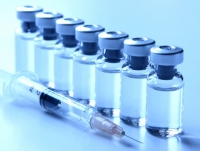tanya
What is a cholera?
 Today in Yemen, the epidemic of cholera rages, the world health system headed by the WHO pays a lot of attention to this problem. This fact raises the question of what cholera is, why it is real in the XXI century and whether it is dangerous for the people of Ukraine?
Today in Yemen, the epidemic of cholera rages, the world health system headed by the WHO pays a lot of attention to this problem. This fact raises the question of what cholera is, why it is real in the XXI century and whether it is dangerous for the people of Ukraine?
Cholera: What is this illness, what are its symptoms and consequences?
Cholera is an acute, especially dangerous, infectious disease. In a short period of time, it can infect a significant number of people, causing the whole epidemic, with mortality from it reaching 50% in the absence of adequate treatment. According to WHO statistics, every year in the world 1.3 to 4 million cases of infection with cholera are recorded, with dying from 21 to 143 thousand people. Continue reading
Tetanus: be careful in the country
 In the summer, in the midst of the summer season, you need to be especially careful when taking time to take preventive measures to prevent infection with a dangerous disease like tetanus. This is an acute, deadly infectious disease, which is characterized by damage to the nervous system, a very likely fatal outcome. Tetanus bacillus enters the human body through mechanical damage to the skin and mucous membranes, so you should be careful during active country work.
In the summer, in the midst of the summer season, you need to be especially careful when taking time to take preventive measures to prevent infection with a dangerous disease like tetanus. This is an acute, deadly infectious disease, which is characterized by damage to the nervous system, a very likely fatal outcome. Tetanus bacillus enters the human body through mechanical damage to the skin and mucous membranes, so you should be careful during active country work.
How can you get tetanus?
The causative agent of tetanus is the spore-forming bacteria Clostridium tetani. They are resistant to disinfection, can be in the soil, on different objects. At one place these bacteria can persist for about 100 years. They are waiting for favorable conditions and are transformed into vegetative forms that produce an extremely dangerous poison. Continue reading
Dangerous meningitis: how not to miss the disease
 Meningitis is one of the most dangerous diseases. Untreated meningitis (inflammatory process in the meninges) leads to disability and even death. Germs, viruses, fungi can cause inflammation in the membranes of both the brain and spinal cord. The most commonly diagnosed are bacterial and viral meningitis. Children are more susceptible to this infectious disease, since their immune systems are weaker than in adults: the last case of meningitis, a 5-year-old baby, which was never saved, was diagnosed last month in Kiev.
Meningitis is one of the most dangerous diseases. Untreated meningitis (inflammatory process in the meninges) leads to disability and even death. Germs, viruses, fungi can cause inflammation in the membranes of both the brain and spinal cord. The most commonly diagnosed are bacterial and viral meningitis. Children are more susceptible to this infectious disease, since their immune systems are weaker than in adults: the last case of meningitis, a 5-year-old baby, which was never saved, was diagnosed last month in Kiev.
Why is the topic of the incidence and prevention of meningitis relevant
Meningitis is dangerous because its first symptoms resemble flu. Continue reading


